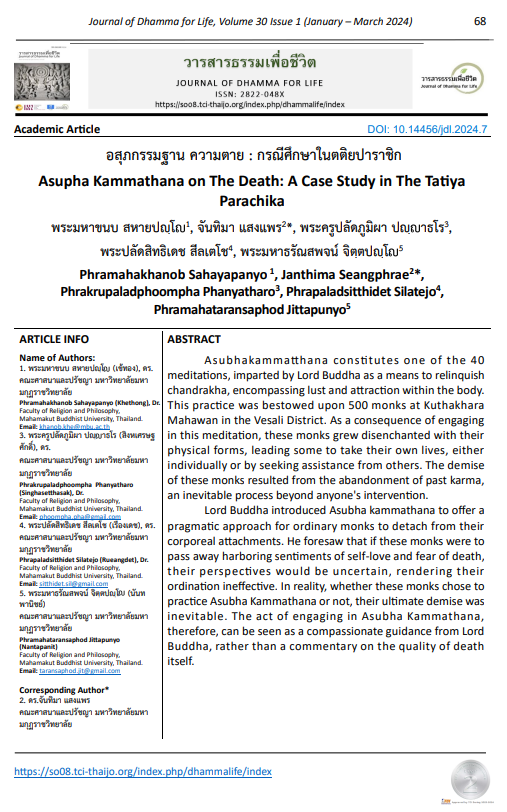Asupha Kammathana on The Death: A Case Study in The Tatiya Parachika
Main Article Content
Abstract
Asubhakammatthana constitutes one of the 40 meditations, imparted by Lord Buddha as a means to relinquish chandrakha, encompassing lust and attraction within the body. This practice was bestowed upon 500 monks at Kuthakhara Mahawan in the Vesali District. As a consequence of engaging in this meditation, these monks grew disenchanted with their physical forms, leading some to take their own lives, either individually or by seeking assistance from others. The demise of these monks resulted from the abandonment of past karma, an inevitable process beyond anyone's intervention.
Lord Buddha introduced Asubha kammathana to offer a pragmatic approach for ordinary monks to detach from their corporeal attachments. He foresaw that if these monks were to pass away harboring sentiments of self-love and fear of death, their perspectives would be uncertain, rendering their ordination ineffective. In reality, whether these monks chose to practice Asubha Kammathana or not, their ultimate demise was inevitable. The act of engaging in Asubha Kammathana, therefore, can be seen as a compassionate guidance from Lord Buddha, rather than a commentary on the quality of death itself.

